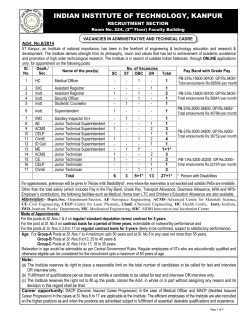
Syllabus for the trade - Directorate General of Employment & Training
SYLLABUS OF SEMESTER SYSTEM FOR THE TRADE OF REFRACTORY TECHNICIAN SEMESTER PATTERN Under Craftsmen Training Scheme (CTS) (Two years/Four Semesters) Revised in 2014 By Government of India Ministry of Labour & Employment (DGE&T) GENERAL INFORMATION 1. Name of the Trade : Refractory Technician 2. N.C.O. Code 3. Duration of Training : Two years (Four semesters each of six months duration). 4. Power Norms : 13.6 KW 5. Space Norms : 130 Sq. mt. (Max L:B: :2:1) 6. Entry Qualification : Passed 10th Class with Science and Mathematics under 10+2 system of Education or its equivalent 7. Trainees per unit : 16 (Supernumeraries/Ex-Trainee allowed: 5) 8a. Qualification for Instructors 8b. Desirable Qualification : Degree in Mechanical/Ceramic/Metallurgy Engineering from recognized university with one year post qualification experience in the relevant field. OR Diploma in Mechanical /Ceramic/Metallurgy Engineering from a recognized board of technical education with two year post qualification experience in the relevant field. OR NTC/NAC passed in same trade with 3 years post qualification experience. : Preference will be given to a candidate with Craft Instructor certificate (CIC) in Refractory Technician Trade. Note: (i) Out of two Instructors required for the unit of 2(1+1), one must have Degree/Diploma and other must have NTC/NAC qualifications. (ii) Instructor qualification for WCS and E.D, as per the training manual. Distribution of training on Hourly basis: Total hours /week Trade practical Trade theory Work shop Cal. &Sc. Engg. Drawing Employability skills 40 Hours 25 Hours 6 Hours 2 Hours 3 Hours 2 Hours Extra curricular activity 2 Hours COURSE INFORMATION 1. Introduction: § This course is meant for the candidates who aspire to become a professional Refractory Technician. 2. Terminal Competency/Deliverables: After successful completion of this course the trainee shall be able to perform the following skills with proper sequence: 1. The trainees can work in the industry as semi-skilled Refractory Technician. 2. The trainee can work in the field of steel industry, Foundry observing safety precautions. 3. The trainees can work on Dismantle & assemble of Refractory liner. 3. Employment opportunities: On successful completion of this course, the candidates shall be gainfully employed in the following industries: 1. Production & Manufacturing industries. 2. Service industries like Railways. 3. Defence organisations 4. In public sector industries like BHEL, BEML, SAIL, BFL, etc and private industries in India & abroad. 4. Further learning pathways: · · On successful completion of the course trainees can pursue Apprenticeship training in the reputed Industries / Organizations. On successful completion of the course trainees can opt for Diploma course (Lateral entry). SYLLABUS FOR THE TRADE OF REFRACTORY TECHNICIAN First Semester (Semester Code no. RFC - 01) Duration : Six Month WEEK TRADE PRACTICAL NO. 1. Importance of trade training, List of tools & Machinery used in the trade. Health & Safety: Introduction to safety equipments and their uses. Introduction of first aid, operation of Electrical mains. TRADE THEORY Importance of safety and general precautions observed in the in the industry/shop floor. All necessary guidance to be provided to the new comers to become familiar with the working of Industrial Training Institute system including stores procedures. Soft Skills: its importance and Job area after completion of training. Occupational Safety & Health Importance of housekeeping & good shop Introduction of First aid. Operation of electrical mains. Introduction of PPEs. Introduction to 5S floor practices. concept & its application. Health, Safety and Environment guidelines, Response to emergencies eg; power failure, legislations & regulations as applicable. fire, and system failure. Disposal procedure of waste materials like cotton waste, metal chips/burrs etc. Basic safety introduction, Personal protective Equipments(PPE):Basic injury prevention, Basic first aid, Hazard identification and avoidance, safety signs for Danger, Warning, caution & personal safety message. Preventive measures for electrical accidents & steps to be taken in such accidents. Use of Fire extinguishers. 2&3 Use of vice clamps, holding the job in the vice and practice of metal sawing with hacksaw and filing the edges maintaining squareness of all the faces. Marking practice using hermaphrodite caliper, surface gauge, engineers‟ try square, marking off table etc. Marking out lines, gripping suitably in the vice jaw, hacksawing to given dimensions, sawing different sections. Filing flat surface and checking the flatness and squareness with engineers‟ try square. Filing four edges, checking all dimensions with outside caliper and steel rule. Description, construction and uses of different hand tools such as files, chisels, hacksaw & hammer etc. Description, construction and uses of different marking tools such as steel rule, caliper, punches, v-block, scribing block etc. Description construction and uses of different job holding devices. Common hand tools, such as:- Steel rule, types of rules and their use. Divides, Calipers, Centre punch, Dot punch, Prick punch, their description and use. Different types of hammers and their use. “V” Block and marking off table Bench vice, types, use, care and maintenance, vice clamp, hacksaw frame and blade, their types, uses. Method of sawing 4. Marking of straight, arcs and parallel lines with odd leg calipers, scribing block and steel rule. Marking practice with divider. (Circles, arcs and parallel lines). Chipping flat surfaces along a marked line. Finding and marking centre line of cylindrical system, with the help of “spirit level and plumb”. Scribing block, Chisel – types, metal and use. Marking block and uses. Surface plates, parallel block, angle plate and Trammel. Surface plate, its use, care and maintenance. Use of Spirit level. 5. Drilling of various sizes of holes on a MS plate. Tapping of different sizes tapped holes on drilled job. 6. Measurement of different dimensions using Vernier height gauge, vernier caliper and micrometer. 7. Forging: - Preparation of hearth. Making of centre punch Making of flat chisel. Making of screwdriver. 8. Practice on pneumatics tools like jack hammer, rammer & pressure gauge. Sheet metal work: Cutting various types of Geometrical shapes. Use of flat scraper to make the surface even of a dove tail fitting. Types of drill bits and parts. Method of drill grinding, cutting angle, defects in drilling and its remedy. Drill chuck and its use. Drilling Process: Types of drilling machines and their use. Taps and Tapping: Types, parts, formula for tapped hole, method of cutting thread with tap. Tap handle, method of extract a broken tap. Vernier height gauge, vennier caliper its least count, use, care and maintenance. Outside and inside micrometer. Its reading least count, use, care and maintenance. Gauge and indication classification. Types of gauges and their use. Use of slip gauge. Ringing action. Working principle of dial gauge. Blacksmith and Forging/Heat treatment: Forge types and uses. Forge tools. Forging operations such as: Marking, Cutting, Drawing out, Jumping, Bending, Punching, Setting down and Forge welding. Basics of hydraulics & pneumatics. 9. 10. 11. 12. 13. Sheet metal work: Introduction, sheet metal hand tools, shears, sheet metal bench tools such as vice and machine tools. Scrapers: Types, method of scraping, Precautions during scraping operation. Practice on all types of gauges. Gauge and indication classification. Types of gauges and their use. Use of slip gauge. Ringing action. Working principle of dial gauge. Sine bar. Method of measuring with a sine bar. Practice on different types of fitting joints. Fasteners: Kinds of fastening Bolts, their types and uses, Nuts, their types and uses, Washers, types and uses, Screws, Key and Key way, types and uses. Studs. Pins and cutters. Welding (Arc), Striking straight beads left Arc welding process: Welding method, welding to right and right to left. Square butt joint. machines, electrode, coding, polarity, edge preparation, types of welding joints and beads. Lap Joint. “T” Joint and Corner joint. Arc welding process: Welding method, welding 14. Gas cutting and Gas welding. Cutting of straight and curved metal pieces. Fusion runs on a M.S. Sheet. Left to Right and Right to Left. 15. Use of dies and making of external threads on various dia MS rods and fit the threaded rods on previous tapped holes. Pipe fitting: Threading of pipes with the use of pipe die. Use of different types of pipe fittings. 16. 17. 18-19 Measurement of AC, DC by using multimeter. Measurement of AC voltage using step up & step down transformer. Measurement of resistance, Voltage & current. Demonstration&Practice of various types of refractories. machines, electrode, coding, polarity, edge preparation, types of welding joints and beads. Gas welding methods: Oxy-acetylene welding, Flames, Gas and Arc welding tools, Oxygen and Acetylene cylinder, Gas regulator, Gas welding equipments, back ward and right ward welding. Welding positions. Dies and dieing: Types of dies, die handle, method of using a die. Reamer parts, kinds of reamer, stud extraction Pipe and pipe fittings: Introduction. Different types of pipes, Pipe Accessories, G.I Pipe accessories, Tools and signs (symbols) of pipe fitting. Fundamental of AC & DC, voltmeter, ammeter, ohm meter, transducer and sensors. Principle of magnetic induction (Self & mutual), Electric passive component – resistor, capacitor & inductor. What is refractory. Classification of refractory. Properties of refractories. Bricks classification, chemical composition and its application area wise , insulation , Bricks expansion material ( ceramic fiber, Hysil block etc..), 20. 21. 23&24 25 Different Shapes: Ø Regular Straight shapes. Ø Side Arch Shape. Ø End Arch Shape. Ø Key and Mini key Shape. Ø Semi Universal Shape. Ø Circular Bricks. Skewback Shape. Ø Checkers Bricks. Other refectory product like castable, motar etc. Practice on operation of water spray gun, Safety and environment measures. Major forms vacuum sweepers, Dry fog nozzles, water of pollution in refractory industry. Sources of pollution & various control techniques. sprinkler etc. Demonstration&practice on prevention of Occupational health hazards and its control. Different hazards in refractory industry. various health hazards. Prevention of occupational diseases. Practice on handling various fuels. Types of fuel used in refractory industry: Operation & maintenance of Producer gas · Coal plant. · Coke · Producer Gas · Furnace oil · LPG Safety & occupational hazard aspect in handling Producer gas plant. Revision Examination SYLLABUS FOR THE TRADE OF REFRACTORY TECHNICIAN Second Semester (Semester Code no. RFC- 02) Duration: Six Month WEEK TRADE PRACTICAL NO. 1. Demonstration&practice of different material & handling of same. 2. 3-4. 5-7. 8-10. 11. TRADE THEORY raw Different raw materials used in manufacturing refractory & their basic physical & chemical properties. Demonstration&practice on quality control. Quality assurance, Definition & importance of Quality control, quality circle. Basic Concept of 5S, Kaizen, TPM, TQM & ISO 9000. Demonstrate&practice different manufacturing Different processes involved in refractory. processes at plant/video demonstration. a) Crushing, Grinding and Sieving b) Batching & mixing c) Hand moulding d) Pressing e) Vibro casting f) Drying g) Firing h) Physical checking Demonstration&practice on Sieve Analysis of Crushing & grinding: Knowledge of different grain size. adjustment for fineness of the output. Identification of parts of mixing machine & operation of mixing ma/c. Practice on changing Various types/parts of Mixing machine. Maintenance of mixing machines. /adjusting scrapper, Adjustment of roller height.. Checking consistency of mixed material and Mixing sequence of different quality mixtures. Physical check of mixture to ensure workability. completion of mixing. Unloading of mixture to bucket. and moisture content of mixture. Practice on weighing of material, filling the mould & operating the pressing(Mechanical & Hydraulic) and gauging of the bricks. Physical inspection of bricks for cracks, lamination & wrecks, warpage. Checking of bulk density of bricks. Practice on operation /monitoring parameters of press.(Manul/Hydraulic) Segregation, Sizes, Edges & corner and any other physical defects. Moulding and pressing:. Types of press & sequence of operation of press machine. Press capacity linked with bulk density. Different defects, identification & reporting. Shaping/Moulding methods. The various processes of shaping/moulding and their limitation. The process of release from mould and handling of bricks to prevent damage. Pre weighing of mixture for consistent 12-13. 14. 15-17. 18-20. product. Demonstration/practice on drying of bricks. Drying of bricks. The objectives of drying Practice on dryers. Classification of dryers. The various dryers used in refractory industries and the process involved in these. Demonstration/practice of different temperature Temperature, Measurement & instruments used in measuring temperature. measuring instrument. Reading of temperature. Practice on preventive maintenance. Thermocouple & its application in measuring temperature (Pyrometer). Maintenance system. Types of maintenance. Importance of preventive maintenance. Preventive maintenance steps on various plant & machinery. Observation and practice on loading/unloading, drying schedule, monitoring of firing schedule. Physical Inspection of finished product. Practice on loading/unloading of bricks. Practice on operation & maintenance of kiln. Practice on firing schedule. Types of kilns for calcinations of raw materials. Different zones of kiln, Fuel used in the kiln Firing of bricks. Kilns for firing of refractory and loading pattern of bricks. Firing schedule & Maturing temperature. Different types of kilns used for firing of bricks. Tunnel kiln. Chamber kiln. Shuttle kiln. Down Draught (DD) kiln. 21. Practice on brick checking. Demonstration waste utilization. Checking of bricks after firing: Sizes, lamination / Cracks, Spongy / Segregation and Edge and corner breakage and other physical defects. Waste Utilization: Recycling of refractory. Control of dust and gasses leakage during the process. Efficient utilization of resources. Optimization of kiln loading Mill house. Operational discipline & control, Firing criteria. 22-23 24-25 26 Implant training / Project work (work in a team) Revision Examination SYLLABUS FOR THE TRADE OF REFRACTORY TECHNICIAN Third Semester (Semester Code no. RFC- 03) Duration: Six Month WEEK TRADE PRACTICAL TRADE THEORY NO. 1-2. Demonstrate& practice different application Basic Application of monolithic refractory method at plant/video demonstration. 1. Storage 2. Worksite 3. Equipment 4. Installation 5. Steel surface 6. Anchoring 7. Formwork / shuttering 8.Water quality 9. Mixing 10.Sampling 11.Vibrating / Rodding 12.Application 13.Joints in monolitics 14.Curing 15. Dry out 16. Criteria for acceptance Cracks 17.Defects and acceptance criteria 18. Inspection 3-4. 5. 6-8. 9. 10- 11. Brick cutting (m/c & hand), Brick joining. Basic application of shaped refractory. Various Heat Treatment Processes – 1. Hardening 2. Normalizing 3. Tempering 4. Annealing 5. Case Carburizing Practice on fitting scaffolding. Scaffolding. Purpose of scaffolding. Materials used in scaffolding & safety aspect in it. Practice with gunning machine, ramming, Gunning, Ramming, Shot crating, Patching, patching.. Coating, hot repair Demonstration on energy Energy conservation. Concerns for energy conservation.Practice on 5S. conservation. Energy conservation drive. Areas of improvement. Best practices to be adopted for energy conservation. Industry visit to get practical knowledge of Maintenance of kilns.Preventive, Periodical & kiln maintenance. break down maintenance.Various parameters to be checked during maintenance. Melting practice of Pig Iron 12-13. Familiarization & Identification of computer parts. Practice on computer for MS word, MS power point, MS Excel. 14 - 16. Practice on packaging. Melting practice of Grey Cast Iron. Introduction to computer basics: Basics of computer, MS word, MS power point, MS Excel. Report writing as per Proforma. Packaging of refractory : Design of pallets. Pallet dimensions. Arrangement of loading of different shapes in the pallets. Outer packaging for container shipment. Stretch wrapping. Primary packing. Secondary packing. Final packing. 17 - 21. Operation of brick cutting m/c , checking Sorting tools perpendicularity of lining using plumb, • Hand tools to remove packing Mortar preparation , Monitoring thickness of materials mortar during installation, Demolition of Survey tools existing/used lining. Use of leveling tool, • Levelling tools Sprit level, water level. Use of wooden • Length level 2 m1 hammer for adjusting brick level. Measuring, • Marking paint red cutting & Installation of Key brick. Practice on hand grinding. Use of brick holder & Carpenter tools brick. Use of skew brick & Arch making, use • Hammer; nails; wood; of screw jack electric/handsaw Demolishing / wrecking • Wrecking Machine, wrecking hammers Brickwork tools -- Marking Pen -- Hammer; (metallic / rubber /wood) -- Buckets -- Rigging chisels -- Trowel for applying mortar -- Measuring tools (meter; stick; level; brick layer string -- Profiles; brick-layer string; -- Brick Cutting machine, (diamond saw) -- Level instrument; -- Paddle mixer for mixing mortar, -- Brick Laying Machine, /screw jack. 22-23 Implant training / Project work (work in a team) 24-25 Revision 26 Examination SYLLABUS FOR THE TRADE OF REFRACTORY TECHNICIAN Fourth Semester (Semester Code no. RFC- 04) Duration: Six Month Week No. 1- 4. 5. 6 - 7. TRADE PRACTICAL TRADE THEORY Storage Worksite Equipment Installation - Steel surface - Anchoring - Formwork / shuttering - Water quality - Mixing - Sampling - Vibrating / Rodding - Application - Joints in monolitics 5 Curing 6 Dry out 7 Criteria for acceptance - Cracks - Defects and acceptance criteria 8 Inspection Demonstration on different parts of the Application of refractory: furnaces. Nomenclature of different parts of the furnaces. The industries of application of refractory: • Iron & Steel • Aluminium& non-ferrous • Foundry • Cement • Thermal Power/Inclinator • Petrochemical/Refinery • Chemical/Fertilizer • Glass Practical training in the model Iron & steel:workshop / fields. Hot metal transfer Ladle, Torpedo Ladles, Sponge iron kilns. Video/Visual display(audio visual display) Opening & repair of vibrator needle, rammer, pneumatic breaker, replacement of chisel. Testing of water quality using litmus paper. Water temperature, quantity of mixing water, time of mixing, Lead time/measurement, Mixer operation, adjustment of scrapper & Cleaning mixer after use & preventive maintenance. Preparation & Fixing of shuttering, Checking Vibrator for capability, vibration time, Height of Castable for vibration, Roding practice. Sprinkling water on casted segment for natural/wet curing. Identifying & reporting physical defects after Dry out. 1 2 3 4 Induction furnace, Electric Arc furnace, LD converter, Ladles, Tundish. 8- 9. Preparation of heating chart & report Curing, Preheating/Dry out, tempering schedule/cycle making. of furnaces after refractory installation. 10-12. Refractory lining practices. 13 - 14. Shaped & Unshaped refractory lining. Anchor types, Refractory lining practices. Construction of vertical wall, brick Construction joints, Expansion joints. laying, gunning, anchor welding, fixing of shuttering & formers, vibro casting, Ramming, Patching/Troweling, fettling(Construction/expansion joints) Practical training in the model Iron & steel: workshop / fields. Slide gate fixing, Porous plug fixing, Fixing of CC refractories. 15 - 16. Study of the refractory lining drawings. Importance of Technical English terms used in industry –(in simple definition only)Technical forms, process charts, activity logs, in required formats of industry, estimation, cycle time, productivity reports, job cards Tools, Tools, Tackles and Operation: 17. Prepare different Types of documentation as per industrial need by different methods of recording information 18- 20. Demonstration & practice Tackles and Operation. Trainings : (Understanding different parts, function and operation), Gunning machine, Spray machine, Fixing devices – PP, SGP, CC Extraction devices – PP, SGP, CC; Pneumatic Rammer, Pencil Vibrator, Vibrating & Casting machines. 21. -Do- Maintenance of Refractory lining. : Different types of refractory practices like LD converter, Laddle, Tundishes, Slide gate refractory, rotary kiln,Mills, Reheating furnace. Occupational Health Hazards and its control. Types of hazards. Knowledge about hazardous materials in the process and how to handle them. Fundamental of fire and explosion and how to prevent fire. Identification of fire extinguisher. Metal safety data sheet (MSDS). 22-23 24-25 26 Implant training / Project work (work in a team) Revision Examination TRADE: REFRACTORY TECHNICIAN LIST OF TOOLS & EQUIPMENTS A : Trainee’s Tool Kit: Sl. No. 1 2 3 4 5 6 7 8 9 10 11 12 13 14 15 16 17 18 19 20 21 22 23 24 25 26 27 28 29 30 31 32 33 Name Steel Rule 12” Hammer Ball Pin 0.45 Kg Hammer Flat (optional) Chisel Cold Flat 2cmX22Cm File Flat 300 mm Bastered File Flat 300 mm Second Cut File Half Round Bastard 200 mm Safety goggles Googles Furness, Antigua Around Heat Proof Head wear anticoncusion Furness Pliers 20cm Vice bench 12cm Jaw Sledge Hammer 5kg Buckets 10 Ltr. Capacity Sprit level 150 mm Pocket steel Tape 1800mm long Crow Bar 1500mm Screw Driver 300mm Bench Grinder Hacksaw 30cm adjustable Work Bench 2400mm x 1300mm x 800 mm Shovel Trammel Scriber Calipers Odd leg Caliper inside 150 mm Centre Punch 150 mm Trowels(Suare & triangle, 4nos. each) Measuring tape 2500mm Hand gloves Leather Pliers 150mm Screw driver 100mm Tester Quantity 21Nos. 21Nos. 21Nos. 21Nos. 21Nos. 21Nos. 21Nos. 21Nos. 21Nos. 05 Nos. 21Nos. 21Nos. 04 Nos. 05 Nos. 05 Nos. 21Nos. 02 Nos. 21Nos. 02 Nos. 21Nos. 04 Nos. 04 Nos. 02 Nos. 21Nos. 21Nos. 21Nos. 21Nos. 08 Nos. 05 Nos. 21Nos. 21Nos. 21Nos. 21Nos. B. Tools & equipments for Production: Sl. No. 1* 2* 3* 4* 5* 6* 7* 8* 9 10* 11* 12 NAME Jaw crusher Roller crusher Ball Mill/Vibro mill Sieves Mixer machine Press Machine Dryer (Oven hot air) Kiln Moulds(Different shapes) Drying furnace(Lab scale) Int. Vol.Im3 Rammer Air Compressor(5bar) Quantity 1 No. 1 No. 1 No. 5 Nos. 1 No. 1 No. 1 No. 1 No. 2 each 1 No. 1 No. 1 No. C. Tools & equipments for Application: Sl. No. 1 2 3 4 5 6 7* 8* 9 10 11 Name Brick cutting m/c with cutting wheel Stirrer Gunning machine Models for electric arc furnace Models for Basic Oxygen furnace Models for Rotary kiln Ladle Tundish Jack hammer with drill bits Vibrator with needle Spraying machine * Quantity 5 Nos. 2 Nos. 2 Nos. 1 No. 1 No. 1 No. 1 No. 1 No. 1 No. 2 Nos. 2 Nos. Note: - For the items marked ‘ ’ MOU with a refractory manufacturing company may be done for imparting training to the trainees. D. General Tools & Equipments: Sl. No. 1 2 3 4 5 6 8 9 10 11 12 13 14 15 17 17 18 19 20 21 22 23 24 25 26 27 28 29 30 31 32 33 34 35 36 37 38 39 40 41 42 43 44 45 46 Name Spirit level Water level Wooden/aluminium rapter (optional) Plumb Masonry hammer Slide caliper Wooden hammer GI Pipe(2”) with clamps for scaffolding Filler Gauge (Min 0.5mm – 5mm) Laser thermometer(Optional) Pyrometer Joint filler Chisel flat 20X200mm Pressure gauge Screw jack Weighing m/c(Min: 10 Kg) Wheel barrow MS pan Measuring flask Litmus paper Thermometer Stop watch Glass biker Star Delta starter Multimeter Voltmeter Flowmeter Vicat apparatus Piano wire/ Wire gauge pad (Optional) Auto CAD software Hand saw Electric hand drill Micrometer (0-25, 25-50,50-75mm) Vernier calipers(0-200mm)(.02 discount) Welding transformer (Not required if welder trade exist) C-Clamp 20 cm Perforated Hood C-Clamp 30cm Light Duty Steel Surface plate 300x300mm Drill twist (metric) 3mm to 12mm Tapes and dies complete set in box BSW,BSF, Metric Oil Can ½ ft Wire Brush Double ended spanner 10mm to 25mm Drill Chuck 0 to 12 morse taper Drill machine to drill upto 12mm dia Quantity 4 Nos. 4 Nos. 2 Nos. 5 Nos. 5 Nos. 5 Nos. 5 Nos. As required 1 No. 1 No. 1 No. 1 No. 5 Nos. 1 No. 1 No. 1 No. 2 Nos. 2 Nos. 2 Nos. As required 1 No. 1 No. 1 No. 1 No. 2 Nos. 2 Nos. 2 Nos. 1 No. 2 nos. 1 No. 10 Nos. 1 No. 1 set each 1 No. 1 No. 5 Nos. 5 Nos. 2 Nos. 1 sets 2 sets each 3 Nos. 10 nos. 5 Nos. 1 No. 1 No. 47 Digital multimeter 48 AC Motor single Phase 49 AC Motor three Phase E. List of additional tools for allied trade in welding 4 Nos. 1 No. 1 No. Sl. Name & Description of Machines Quantity No. 1. Transformer welding set 150 amps. – continuous welding current, with 1 Set all accessories and electrode holder 2. Welder cable to carry 200 amps. With flexible rubber cover 20 Meter 3. Lugs for cable 12 Nos. 4. Earth clamps. 2 Nos. 5. Arc welding table (all metal top) 122 cm X 12 cm X 60 cm with 1 No. positioner. 6. Oxy – acetylene gas welding set equipment with hoses, regulator and 1 Set. other accessories. 7. Gas welding table with positioner 1 No 8. Welding torch tips of different sizes 1 Set 9. Gas lighter. 2 Nos 10. Trolley for gas cylinders. 1 No 11. Chipping hammer. 2 Nos 12. Gloves (Leather) 2 Pairs 13. Leather apron. 2 Nos 14. Spindle key for cylinder valve. 2 Nos. 15. Welding torches 5 to 10 nozzles. 1 Set. 16 Welding goggles 4 Pairs. 17. Welding helmet with coloured glass 2 Nos. 18. Tip cleaner 10 Sets. Note: -The above items are to be provided for Training where the Welding trade does not exist. F. Tools for Allied Trade- Sheet Metal Work Sl. No. 1 2 3 4 5 6 7 8 Trammel 30cm. Prick punch Mallet. Snips straight 25 cm. Setting hammers with handle. Planishing hammer. Snip bent 25 cm. Stake hatchet. 1 no. 2 nos. 2 nos. 2 nos. 2 nos. 2 nos. 2 nos. 2 nos. 9 10 Stake grooving. Gauge imperial sheet. 2 nos. 1 no. Name of the items Qty Note: -The above items are to be provided for Training where the Sheet Metal trade does not exist. G. General Furniture: 1 2 3 4 Almirah (as per required size) Steel Rack (5’x4’x2’) Fire Extinguisher First aid Box 2 Nos. 2 Nos. 2 Nos. 1 No. LIST OF TRADE COMMITTEE MEMBERS Sl. No. Name & Designation Sh/Mr/Ms. Organization Mentor Council Designation Members of Sector Mentor council 1. 2. A. D. Shahane, Vice-President, (Corporate Trg.) Dr. P.K.Jain, Professor 8. N. Ramakrishnan, Professor Dr. P.V.Rao, Professor Dr. Debdas Roy, Asstt. Professor Dr. Anil Kumar Singh, Professor Dr. P.P.Bandyopadhyay Professor Dr. P.K.Ray, Professor 9. S. S. Maity, MD 3. 4. 5. 6. 7. 10. Dr. Ramesh Babu N, Professor 11. R.K. Sridharan, Manager/HRDC 12. N. Krishna Murthy Principal Scientific Officer 13. Sunil Khodke Training Manager 14. Ajay Dhuri 15. Uday Apte 16. H B Jagadeesh, Sr. Manager 17. K Venugopal Director & COO 18. B.A.Damahe, Principal L&T Institute of Technology 19. Lakshmanan. R Senior Manager 20. R C Agnihotri Principal Larsen & Tourbo Ltd., Mumbai:400001 IIT, Roorkee, Roorkee-247667, Uttarakhand IIT Gandhinagar, Gujarat-382424 IIT Delhi, New Delhi-110016 NIFFT, Hatia, Ranchi-834003, Jharkhand NIFFT, Hatia, Ranchi-834003, Jharkhand IIT Kharagpur, Kharagpur721302, West Bengal IIT Kharagpur, Kharagpur721302, West Bengal Central Tool Room & Training Centre (CTTC), Bhubaneswar IIT Madras, Chennai Bharat Heavy Electricals Ltd, Ranipet, Tamil Nadu CQA(Heavy Vehicles), DGQA, Chennai, Tamil Nadu Bobst India Pvt. Ltd., Pune Chairman TATA Motors, Pune TATA Motors, Pune HMT, Bengaluru NTTF, Peenya, Bengaluru Member Member Member Member L&T Institute of Technology, Mumbai BOSCH Ltd., Bengaluru Member Indo- Swiss Training Centre Chandigarh, 160030 Member DGET HQ, New Delhi. Mentor CSTARI, Kolkata Co-ordinator Member Member Member Member Member Member Member Member Member Member Member Member Member Mentor 21. Sunil Kumar Gupta (Director) Members of Core Group 22. N. Nath. (ADT) 36. H.Charles (TO) Sukhdev Singh (JDT) Ravi Pandey (V.I) A.K. Nasakar (T.O) Samir Sarkar (T.O) J. Ram Eswara Rao (T.O) T.G. Kadam (T.O) K. Mahendar (DDT) Shrikant S Sonnavane (T.O) K. Nagasrinivas (DDT) G.N. Eswarappa (DDT) G. Govindan, Sr. Draughtsman M.N.Renukaradhya, Dy.Director/Principal Grade I., B.V.Venkatesh Reddy. JTO 37. N.M.Kajale, Principal, 23. 24. 25. 26. 27. 28. 29. 30. 31. 32. 33. 34. 35. Subrata Polley, Instructor VINOD KUMAR.R Sr.Instructor 40. M. Anbalagan, B.E., Assistant Training Officer 41. K. Lakshmi Narayanan, T.O. 38. 39. NIMI, Chennai. ATI Kanpur ATI Kanpur ATI Kolkata ATI Kolkata RDAT Hyderabad ATI Mumbai ATI Chennai ATI Mumbai ATI Hyderabad Member Team Leader Member Member Member Member Member Member Member Member FTI Bangalore ATI Chennai Member Member Govt. ITI, Tumkur Road, Banglore, Karnataka Govt. ITI, Tumkur Road, Banglore, Karnataka Govt. ITI Velhe, Distt: Pune, Maharashtra ITI Howrah Homes, West Bengal Govt.ITI Dhanuvachapuram Trivendrum, Dist., Kerala Govt. ITI Coimbatore, Tamil Nadu DET, Tamil Nadu Member Skill Sonics, Bangalore Skill Sonics, Bangalore CADEM Tech. Pvt. Ltd., Bengaluru CADEM Tech. Pvt. Ltd., Bengaluru Ohm Shakti Industries, Bengaluru Member Member Member Member Member Member Member Member Member Other industry representatives 42. Venugopal Parvatikar 43. Venkata Dasari 44. Srihari, D 45. Dasarathi.G.V. 46. L.R.S.Mani Member Member
© Copyright 2025
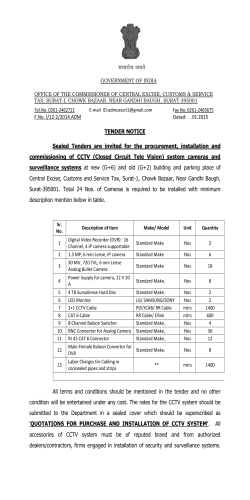
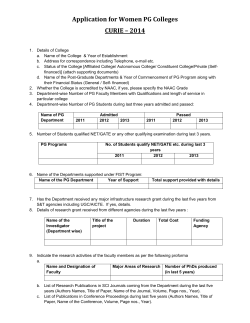
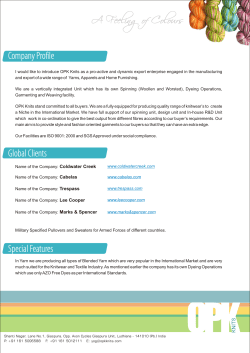
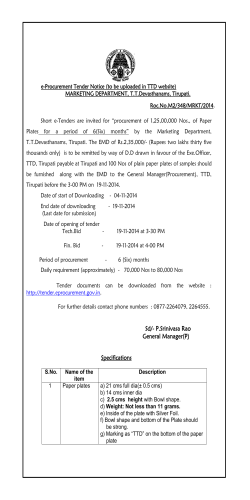
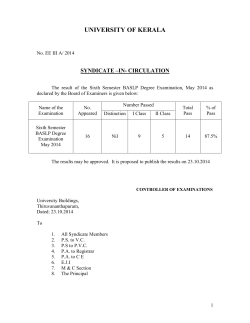
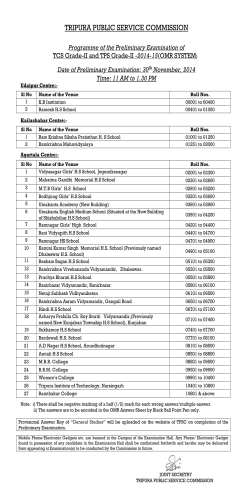
![CLASS : NURSERY [C.B.S.E] PATTERN YEARLY SYLLABUS](http://cdn1.abcdocz.com/store/data/000097541_2-93731ba542ecc793775ba1475ae9d7c8-250x500.png)
